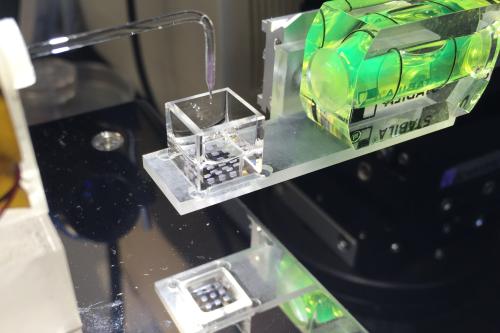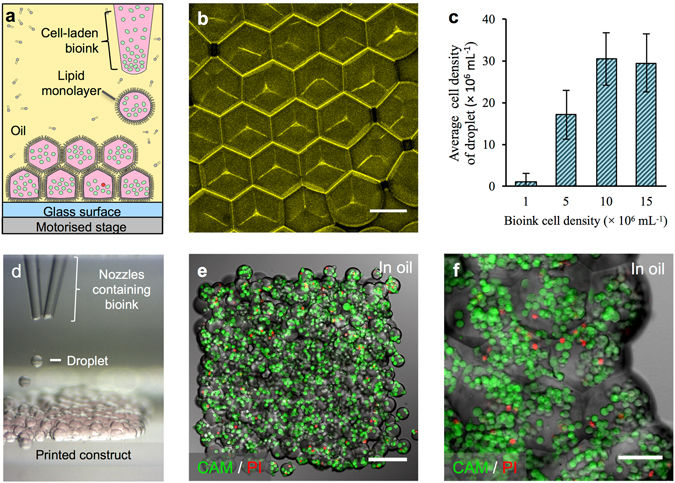In a resin cube on a suspended platform, a glass pipette 3D prints mammal cells as individual droplets of water. The goal of this process is to create three-dimensional tissues that match the behaviour and structure of those in the human body.
At a scale below 200 microns, the method offers 3D bioprinting the high resolution it needs to create cellular-level complexity.
A breakthrough in tissue engineering, the droplet-based 3D printer as been developed by a multidisciplinary team of scientists at the University of Oxford and the University of Bristol in the UK.

Complex creatures
Living cells are hard to handle, and to become tissue they have to be engineered into complex, multilayered structures.
Scaffolds serve as one popular method for tissue culture, but they aren’t failsafe. At some point of the process supportive structures have to be removed. Cells added to the scaffolds can also move and, if a soft structure, the structures can collapse on themselves.
“To date, there are limited examples of printed tissues, which have the complex cellular architecture of native tissues.” says Oxford’s Dr Alexander Graham, co-author of the droplet based 3D bioprinting study, “Hence, we focused on designing a high-resolution cell printing platform, from relatively inexpensive components, that could be used to reproducibly produce artificial tissues with appropriate complexity from a range of cells including stem cells.”
Kidneys and cartilage
The research led by the Bayley Research Group and School of Cellular and Molecular Medicine has been published open access in the journal Scientific Reports.
In the paper, the team demonstrates an ability to 3D print human embryonic kidney (HEK) cells and sheep stem cells (oMSCs) at tissue relevant densities.
When transferred to culture medium, HEKs on average demonstrated 90% viability.
Notably, after 5 weeks of culture, the 3D bioprinted oMSCs differentiated into the cellular lineage of cartilage.

A bioprinting breakthrough
The study by Oxford and Bristol is a breakthrough for the field in terms of precision.
Dr Adam Perriman from the School of Cellular and Molecular Medicine at the University of Bristol comments,
“The bioprinting approach developed by Bristol’s School of Cellular and Molecular Medicine in partnership with Oxford University is very exciting, as the cellular constructs can be printed efficiently at extremely high resolution with very little waste.”
“The ability to 3D print with adult stem cells and still have them differentiate was remarkable, and really shows the potential of this new methodology to impact regenerative medicine globally.”
Read about all the latest 3D printing news and research in our newsletter, on Facebook and via Twitter.
Register on our 3D printing jobs site here.
Featured image: The 3D droplet bioprinter, developed by the University of Oxford and the University of Bristol. Photo by Sam Olof



